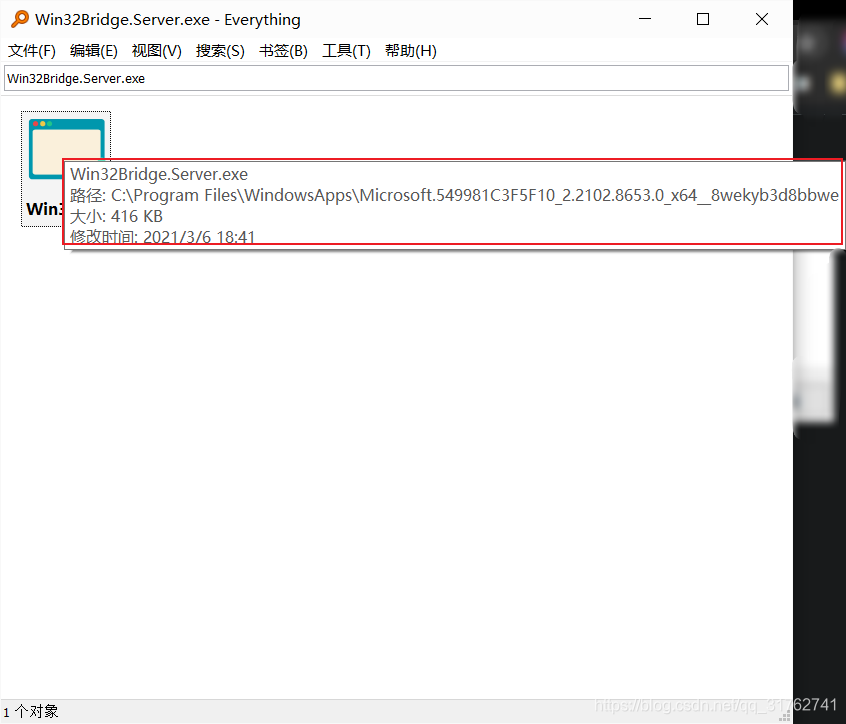电脑开机弹出当文件已存在时,无法创建该文件。
本文共 550 字,大约阅读时间需要 1 分钟。
发生情况
当时删Visual Studio没删除干净

用Evrything搜索Visual Studio删除残余文件,应该是动了系统文件,误删了系统文件,导致每次开机弹窗,影响系统自启目录
启动目录:Win+r输入shell:startup  该文件夹的程序会在开机的时候自启。
该文件夹的程序会在开机的时候自启。 但是,由于我的系统出现问题,阻断了自启。
 每次点击确定之后,系统启动文件夹里面的的程序才会缓慢的自启,强迫症很难受,折腾好久找到解决方案。
每次点击确定之后,系统启动文件夹里面的的程序才会缓慢的自启,强迫症很难受,折腾好久找到解决方案。 错误信息和Win32Bridge.Server.exe有关
 在访问WindowsApps文件夹的时候又遇到权限不足的问题
在访问WindowsApps文件夹的时候又遇到权限不足的问题  根据错误信息进入目录 但是由于路径过长,不太好输入
根据错误信息进入目录 但是由于路径过长,不太好输入(如果有耐心你就一个个慢慢输入) 使用Everything搜索最后的子文件名称Win32Bridge.Server.exe  直接删除这个文件。
直接删除这个文件。 之后需要新建账户

这是控制面板管理账户的进去步骤
 进去之后添加一个新账户
进去之后添加一个新账户  然后切换账户,打开新建的账户
然后切换账户,打开新建的账户  之后在锁屏界面就可以切换新账户
之后在锁屏界面就可以切换新账户 进去新账户之后在切换回来,打开错误信息路径
 会发现你删除的
会发现你删除的Win32Bridge.Server.exe这个文件居然又出现了,重启测试居然不弹窗了,然后就可以删除新建的账户了。 转载地址:http://riex.baihongyu.com/
你可能感兴趣的文章
netty(1):NIO 基础之三大组件和ByteBuffer
查看>>
Netty:ChannelPipeline和ChannelHandler为什么会鬼混在一起?
查看>>
Netty:原理架构解析
查看>>
Network Dissection:Quantifying Interpretability of Deep Visual Representations(深层视觉表征的量化解释)
查看>>
Network Sniffer and Connection Analyzer
查看>>
Network 灰鸽宝典【目录】
查看>>
Networkx写入Shape文件
查看>>
NetworkX系列教程(11)-graph和其他数据格式转换
查看>>
Networkx读取军械调查-ITN综合传输网络?/读取GML文件
查看>>
network小学习
查看>>
Netwox网络工具使用详解
查看>>
Net与Flex入门
查看>>
net包之IPConn
查看>>
net发布的dll方法和类显示注释信息(字段说明信息)[图解]
查看>>
Net操作Excel(终极方法NPOI)
查看>>
Net操作配置文件(Web.config|App.config)通用类
查看>>
Net连接mysql的公共Helper类MySqlHelper.cs带MySql.Data.dll下载
查看>>
NeurIPS(神经信息处理系统大会)-ChatGPT4o作答
查看>>
neuroph轻量级神经网络框架
查看>>
Neutron系列 : Neutron OVS OpenFlow 流表 和 L2 Population(7)
查看>>